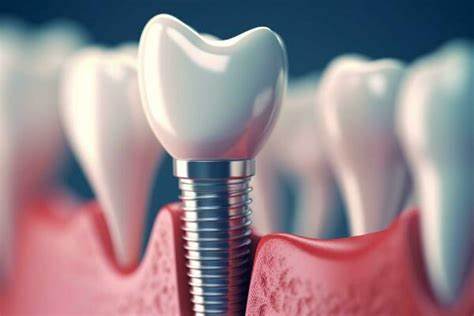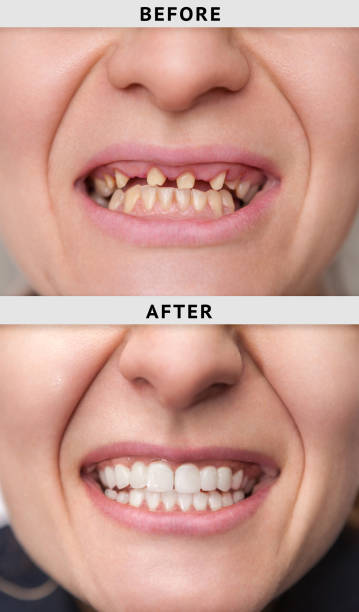Dental Implants in Patients With Ectodermal Dysplasias
This section gives an overview of how dental implants are used in individuals with hypodontia (missing teeth). It’s important to note that implant procedures can vary, and the information provided here covers general principles rather than every possible approach.
A Brief History
Attempts to replace missing teeth using implants go back centuries, but success was limited until the mid-20th century. A breakthrough in Sweden revealed that titanium can bond with living bone – a process called “osseointegration.” This discovery transformed dental implant treatment.
How Dental Implants Work
Modern implants are typically titanium screws inserted into the jawbone, providing a stable foundation for fixed or removable artificial teeth. Unlike natural teeth, which are anchored by a periodontal ligament that allows slight movement, implants are fused directly to the bone and cannot move. This lack of flexibility is important to consider, especially in growing children, as jaw growth continues into late adolescence or early adulthood.
Why Implants Need Careful Timing
Because implants do not adjust to changes in jaw growth, placing them too early (before growth is complete) can lead to problems. The implant may remain fixed while natural teeth shift with the growing jaw, making the implant appear out of place or sunken.
Generally, implant placement is delayed until growth is complete—typically around ages 16–18 for girls and 18–21 for boys. An exception may be made for the lower jaw if no teeth are present. Until implants can be placed, temporary options such as removable dentures or bridges are often used to support appearance and function.





Key Factors in Implant Planning
Successful treatment with implants depends on several important considerations:
- Current and future oral health needs – Is an implant the best option, or would crowns, bridges, or dentures be more suitable?
- Patient and caregiver input – Informed consent is essential. All treatment options should be discussed thoroughly, taking into account personal wishes and understanding. Note: In the UK, minors who are mature enough can give consent to dental treatment themselves.
- Medical history – Most general health issues don’t rule out implant treatment, but a full history helps assess suitability and risks.
- Jaw development – Placement is best done after skeletal maturity, except in certain lower jaw cases. Growth must be complete to avoid complications.
- Jawbone condition – Individuals with ectodermal dysplasia often have less jawbone in areas where teeth are missing. X-rays or scans are used to assess whether there’s enough bone to hold an implant. If not, bone grafting may be needed.
Bone Grafting and Sinus Lifts
When the jaw lacks enough bone to support an implant, a graft may be necessary. Bone may be taken from the jaw, chin, or another part of the body (like the hip or shin) to rebuild the area. In the upper jaw, a procedure called a sinus lift may also be needed to make room for new bone.
It can take 3 to 12 months for the new bone to fully integrate and be ready for implant placement. Larger grafts take longer to mature, so patience is essential.
Cost and Access
Implant treatment is complex and costly, involving highly trained specialists and custom-made parts. It often requires several stages of care over a long period. While NHS funding is available in some cases, future changes in funding or eligibility should be considered when planning treatment.
The Implant Procedure: Step by Step
- Implant placement – A titanium post is inserted into the bone. A healing cap is placed on top, and the gum is closed over it. Healing takes 2–6 months, during which the implant fuses with the bone.
- Abutment and crown – Once healed, a small connector (the abutment) is attached to the implant. A custom crown, bridge, or denture is then created to fit over it. This may take several appointments over a few months.
- Ongoing care – Implants require regular check-ups (every 6–12 months), excellent oral hygiene, and monitoring to ensure surrounding tissues stay healthy. Issues like pain, looseness, or gum changes must be reported promptly.
Dental implants can offer life-changing benefits in the right circumstances, but they are not a quick fix. They require careful planning, commitment to oral care, and a personalised treatment approach.
They can make a real difference in the lives of people with hypodontia and ectodermal dysplasia—but as with any medical treatment, timing, planning, and expert advice are key. Every individual’s journey is unique.
To learn more about real experiences and professional guidance, take a look at:
-
Clinical advice on treatment with dental implants in HED – Expert insights into best practices and considerations.
-
My Implant Journey – A personal story from someone who’s been through the process.
These resources can help you understand what to expect and prepare for conversations with your dental team.

